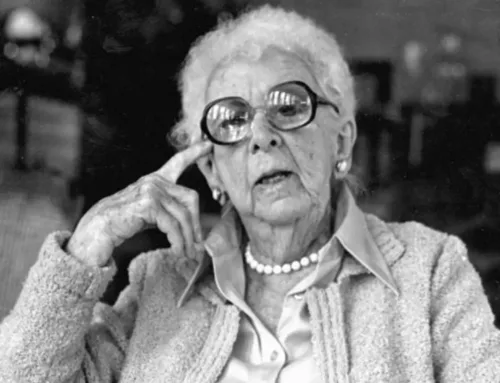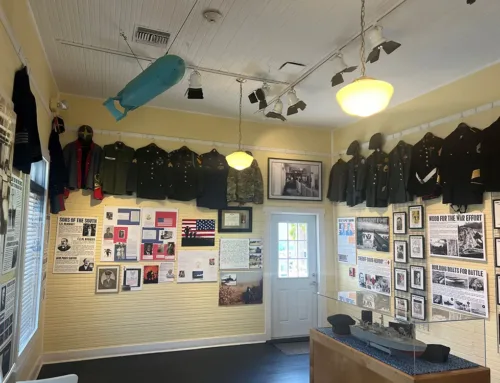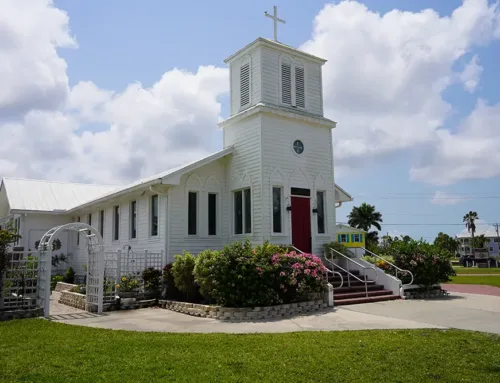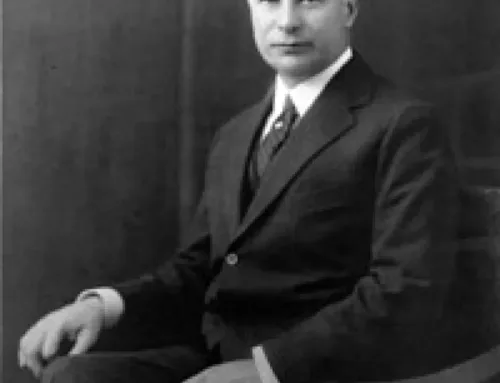Everglades City
by Lila Zuck
Embark on a captivating journey through Collier County’s history.
1923
July 7th. The steamer “Everglades,” draped with bunting and with the Fort Myers band playing “Dixie,” steamed into Caxambas for the celebration of the birth of Collier County on May 8th. Scores of well-wishers from distant points came by boat to participate in the festivities. Caxambas was chosen for the celebration because of the deep, wide channel upon entry to Marco island from the Gulf.
The Towns of Everglades and Naples were incorporated that year, on May 8th and December 1st respectively, with Everglades designated as the county seat of government.
Collier County’s first hospital, the Juliet C. Collier Hospital, opened at Everglades.
1924
Collier County’s first General Election was held on July 14th. The county was divided into eight precincts.
The Bank of Everglades offered “Safe and Easy Banking by Mail.”
Collier County participated in the 1924 New York World’s Fair with a display of agricultural products and Seminole Indian culture and handicrafts.
1926
Rail service to Collier County was inaugurated. The Atlantic Coast Line Railway’s “Florida Special” pulled into the ACL Depot in East Naples on December 27th. The ACL carried passengers but was primarily a freight line. From East Naples, the train traveled across a wooden trestle bridge to Marco Island to pick up clams and clam juice from the Doxsee Clam Factory.
1927
The Collier County Chapter of the American Red Cross was established at Everglades.
1928
The Atlantic Coast Line Railway inaugurated service to Everglades.
A grand celebration at Everglades marked the opening of the Tamiami Trail on April 26th, linking Tampa with Miami and running through Collier County. The event included an Automobile Exposition and the duplication of Collier’s display in the 1924 New York World’s Fair.
1931
Collier was the first county in Florida to have all its schools accredited by the Southern Association of Colleges and Secondary Schools.
The first bridge to Marco Island was constructed using a span of the 1924 bridge over the Caloosahatchee River which was towed to Marco Island on a barge for the swing span of the Marco bridge when a new bridge over the Caloosahatchee River was constructed.
1933
Florida Governor David Sholtz appointed Barron G. Collier Lieutenant Colonel on his military staff, bringing the total number of appointees to 51.
1938
Having opened in 1927, Everglades High School held its 11th annual graduating exercises on June 2nd this year. The three graduates were Misses Elveda Boggess, Martha Janes, and Gertrude Webb. Miss Boggess presented the school with a set of stage furniture, the parting gift from the class of 1938.
1939
Barron G. Collier passed away on March 13th. He was born in 1973 to parents from a generation for whom the possibility of defeat served as fuel for successful perseverance, a trait he inherited.
1940
Belle Thompson was the first resident of Chokoloskee to graduate from Everglades High School on Sunday May 19th. The graduation program was held at the new Everglades Community Church for Belle Thompson and fellow seniors Esther Gunby, Marjorie House and Estelle Webb. A Junior-Senior banquet held on May 10th at the Everglades Inn was followed by a dance at the “Rendezvous” at Copeland.
1941
December 25th. The Board of Collier County Commissioners sent a Christmas gift to each of the 74 men from Collier County serving in all branches of the service in camps all over the United States and on ships in both oceans. A month earlier, on November 5th, Private Arthur Cleveland, 367 Infantry at Camp Claiborne, Louisiana, a black resident of Immokalee employed at the A.C.L. Railroad, was one of the first servicemen killed.
1944
The Atlantic Coast Line Railway discontinued service to East Naples and Marco Island.
1949
Planning to develop Collier City (Caxambas) on southern Marco Island, the Collier Company relocated all the residents and their homes, to Goodland. Effective October 1st, the name of the post office was changed from Collier City to Goodland. the postmistress was Miss Cora E. Lee.
Collier County continued to hold first place over other counties in the U.S. Savings Bond “Opportunity Drive.”
1952
The Everglades Chamber of Commerce started a campaign to make Everglades a port for the Tortugas shrimp boats.
The 24-member Everglades Junior Wildlife Association was formed from Everglades schools by the Game and Fresh Water Fish Commission.
As a prelude to winding up its logging operations in Collier County, Lee Tidewater Cypress transferred 137,000 acres of its land to the J.C. Turner Lumber Company.
In the absence of a countywide mosquito control program, the Everglades City Council voted to purchase a jeep with a mosquito fogging attachment.
Newly constructed Immokalee High School held its first graduation exercises for two seniors, Arlene Hancock and Hazel Dupree.
1954
Formerly printed in Fort Myers, the first issue of The Collier County News was printed in Collier County, at the newspaper’s Crayton Cove office on April 2nd.
The first home was built in Pine Ridge.
The Everglades-Chokoloskee causeway was constructed, connecting the island with the mainland.
Circular in design, the first road in Chokoloskee was paved.
Daily Atlantic Coast Line Pullman coach service was inaugurated between Naples, Washington, Baltimore, Philadelphia and New York.
1956
The first service was held in the Everglades Baptist Church in December. The Rev. E.P. Strickland came to Everglades in 1954 and started services in the Everglades School auditorium in 1955. The first church building was donated to the congregation from Jerome when the sawmill closed and there weren’t enough Baptists left in Jerome to warrant a church.
Based on population, 1,465 in 1950, and on its way to reaching 3,876 in 1958, Naples’ representation on the Board of Collier County Commissioners was increased from one to two seats.
Collier County school desks were no longer bolted to the floor.
Atlantic Coast Line Rail service to Everglades City was discontinued.
1958
The widening of the Tamiami Trail through Collier County began.
1959
City of Naples water was extended to the first homeowners in East Naples.
Bethune School in Immokalee became the first school in Collier County to have all its teachers trained in First Aid.
The Collier County Blood Bank was established.
The First World Series of Sports Fishing Everglades Division was held on January 18th.
Seven-year old Immokalee High School received accreditation from and was admitted to the Southern Association of Colleges and Secondary Schools.
Football was organized at Immokalee High School. The team, the Immokalee Indians, were uniformed in Red and White jerseys.
On January 10th the Everglades diesel power plant, which for years supplied the town with power, closed and the town started getting current from Lee County Electric Cooperative, Inc. in Fort Myers. The old plant and an operator were kept on standby in case of an emergency.
The Immokalee Airport, valued at $1,611,161 and covering 1339.6 acres, was turned over free of charge by the federal government to Collier County.
The new Chokoloskee Church of God was completed in September in front of the former church, which Rev. T. J. Wells planned on tearing down and relocating the Chokoloskee school beside it and no longer in use, to alongside the new church for use as a community center.
Collier County Small Claims Court Judge George B. Davis, known as the unofficial Mayor of East Naples, was honored by having Old Airport Road, where he lived, renamed Davis Avenue before he passed away in 1961 at age 80.
1960
Mrs. Jerry Snyder, wife of Dr. Kenneth Snyder, Mayor of Everglades City, together with a county public health nurse gained the confidence of the Seminole Indians and they agreed to have their school-age children vaccinated.
The first Collier County Fair took place on January 18-24th at the original Swamp Buggy Grounds on Radio Road in East Naples.
The first black blood bank was established in the River Park community in Naples.
1961
Ground was broken to construct the first Publix supermarket in Collier County, at the Naples Shopping Center, opposite the present-day Coastland Center on U.S. 41.
1962
The Collier County Courthouse and Government Center in East Naples were dedicated on September 30th. The county seat had been relocated from Everglades City to East Naples by referendum in 1959.
1963
In November, Junior Billy and his sister Mary Billie became the first Seminole freeholders in Collier County. In November, they purchased one acre of land fronting the Tamiami Trail near the Turner River. As Junior explained, his surname was erroneously recorded as ending in “y.”
1964
The position of Superintendent of the Collier County Board of Public Instruction ceased being a position elected by the public at large.
1967
The Atlantic Coast Line Railway and the Seaboard Air Line Railway merged as the Seaboard Coast Line Railroad Company and continued to provide rail service to Collier County to the Depot in Naples.
1968
The transfer of the elementary black students from George Washington Carver to Lake Park Elementary of Shadowlawn Elementary completed the integration of all Collier County public schools.
1969
The Florida Legislature passed the Inter-local Cooperation Act, authorizing municipalities and counties “to enter into contracts for the performance of functions” which will “make the most efficient use of their powers” to mutually benefit their communities.
1970
Formerly part of the 12th Judicial Circuit, Collier County became part of the 20th Judicial Circuit.
1971
The last Seaboard Coast Line passenger train left the Naples Depot on April 21st, ending the era of rail service to Collier County, as Amtrack was launched nationwide.
Located within the Big Cypress National Preserve, the Kirby Storter Roadside Park was dedicated to the son of pioneer George W. Storter, Jr. Kirby Storter, District Maintenance Engineer for the Florida Road Department, built roads and bridges in Collier County from 1930-1965.
1976
The Florida Legislature dissolved the 1947 Naples Mosquito Control District and established the Collier County Mosquito Control District. Spraying, which originally covered six square miles and extended to 98 square miles in 1963, was now countywide.
1977
Emergency 911 telephone service was inaugurated in Collier County.
1982
Naples held its first Fourth of July Parade.
1984
The Collier County Veterans’ War Memorial Monument was constructed at Cambier Park in Naples.
1987
Naples Municipal Airport hosted its first annual “Fantasy in Flight” hot-air balloon race, relocated to the 40-acre Collier County Fair Grounds the following year for safety reasons.
1990
Collier County’s first Cardiac Catheterization Laboratory opened at Naples Community Hospital’s new Shick Heart Center.
The first Teddy Bear Museum in the United States opened in North Naples, on the corner of Pine Ridge and Airport-Pulling Roads.
Collier was one of the first counties in Florida to take advantage of the state and federal grant program encouraging reef building.
1997
Marco Island became Collier County’s third incorporated city, after Everglades in 1953 and Naples in 1949.
1998
Everglades City was named Florida’s Outstanding Rural Community of the Year.
1999
Naples Airport became the first airport in the Nation to ban Stage 1 jet aircraft, the loudest of four classifications outlined in the federal government’s Airport Noise Capacity Act of 1990.
2012
The Seminole Casino Immokalee inaugurated “Balloons Over Paradise” a fun-filled event hosted at the Immokalee Regional Airport.
2015
Best Choice Awards added Everglades City to the “50 Best Small Downtowns in America.”
2023
Collier County celebrated its 100th birthday at Everglades City on May 8th, the day the county was created, and at the Collier County Government Center on July 7th, when the first Collier County Commission meeting took place.
The 100th birthday of Naples was celebrated with a Centennial Gala on November 30th at Baker Park and a concert at Cambier Park on December 1st, the day of incorporation.
As we step into the next century together …
Happy New Year!






